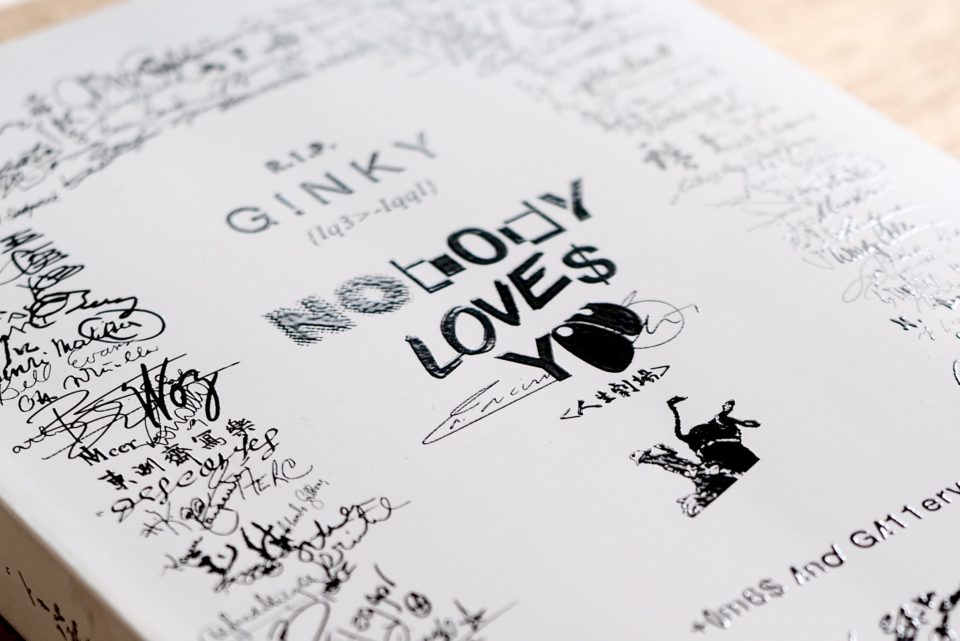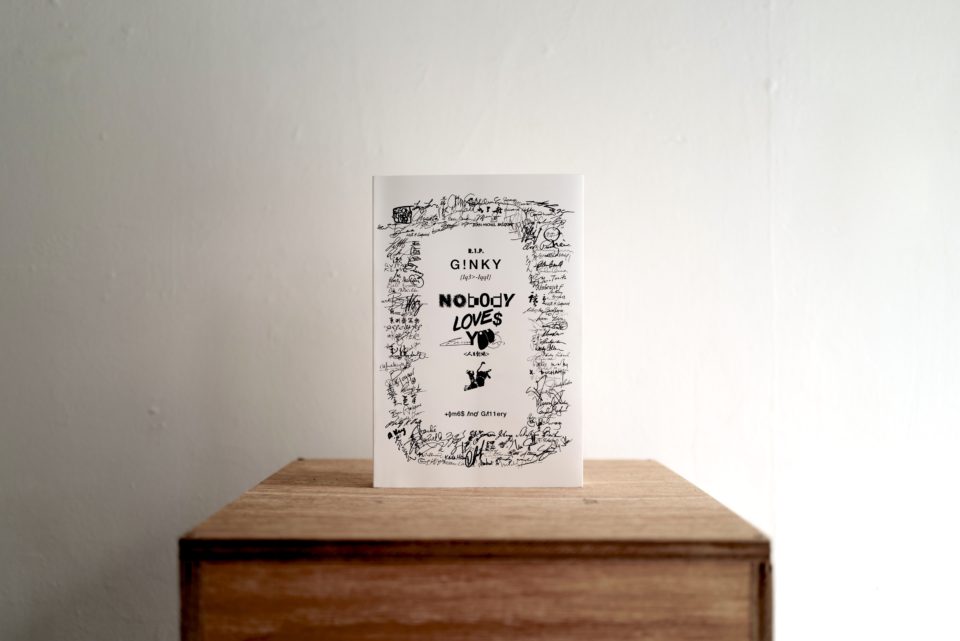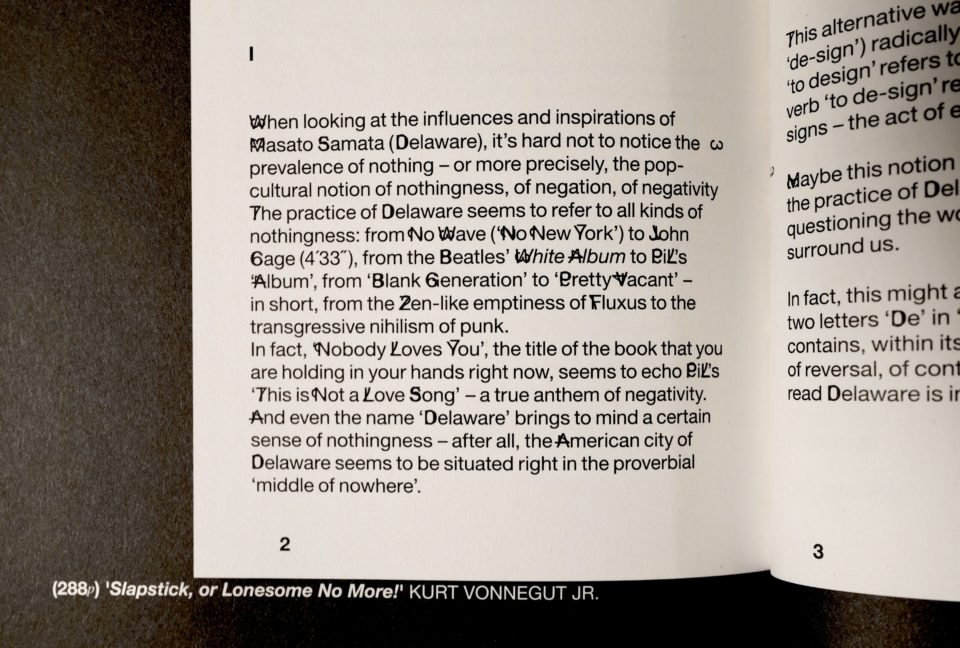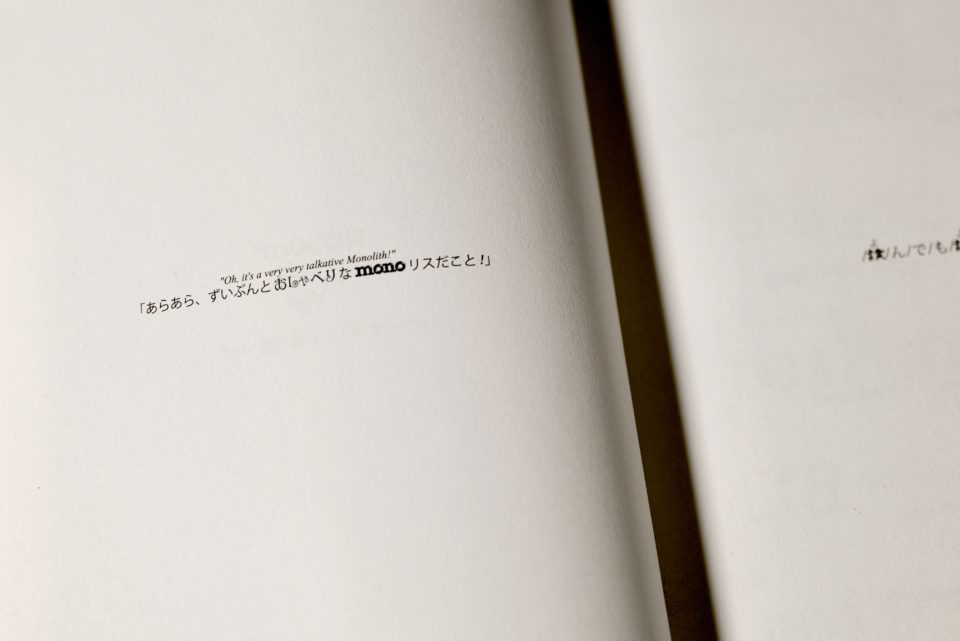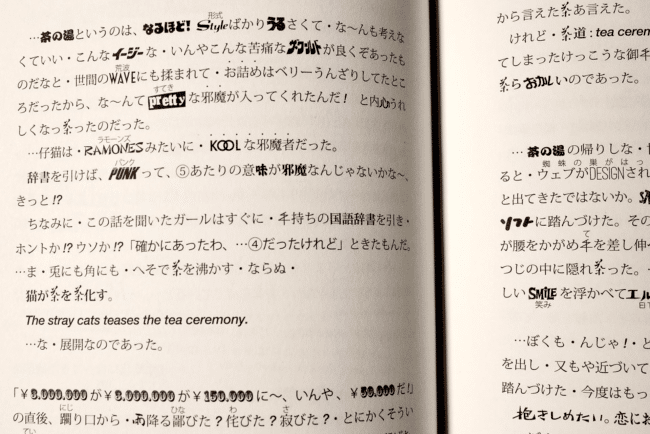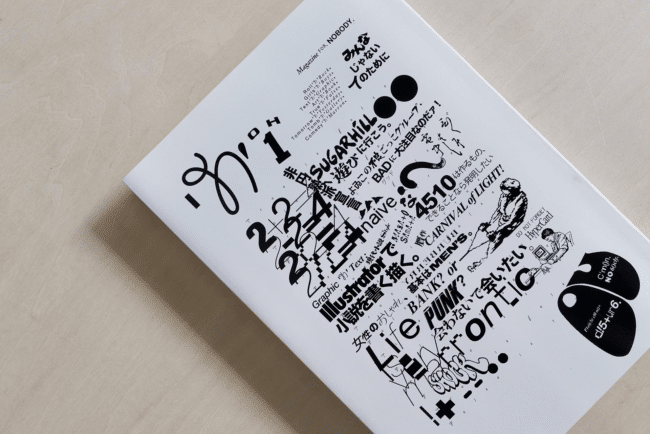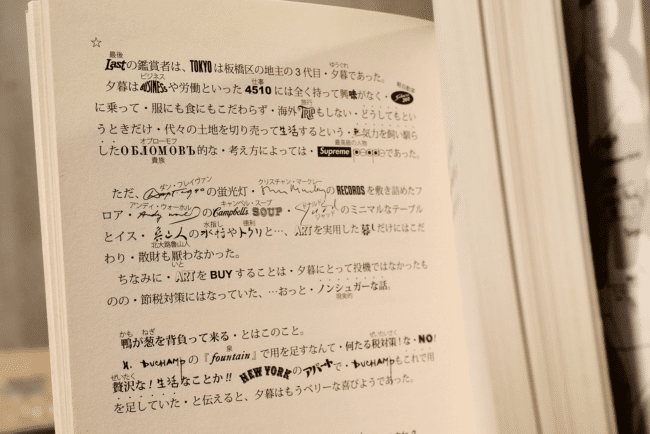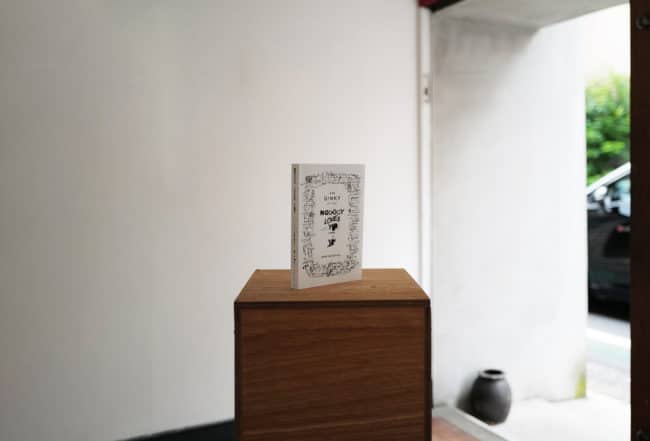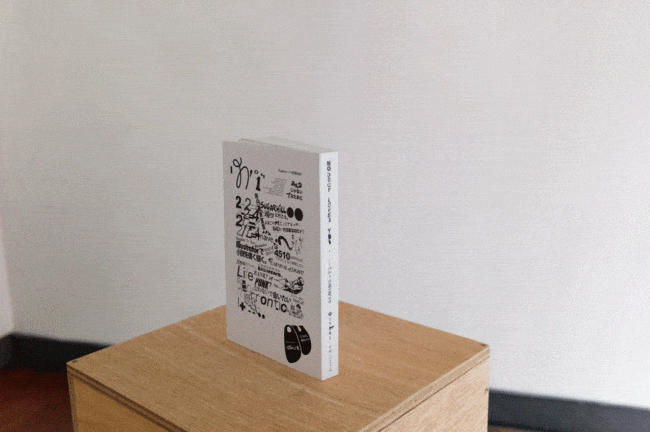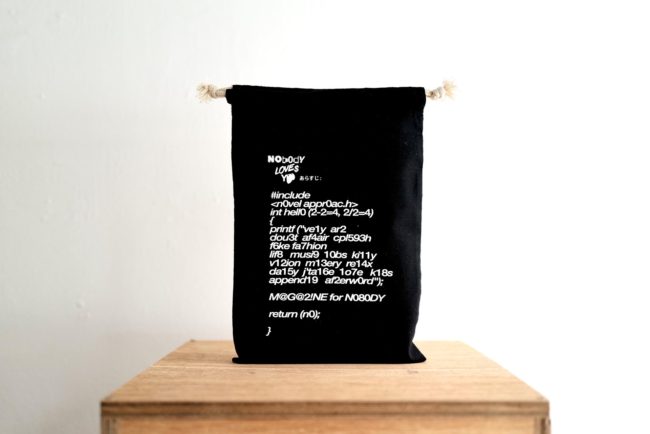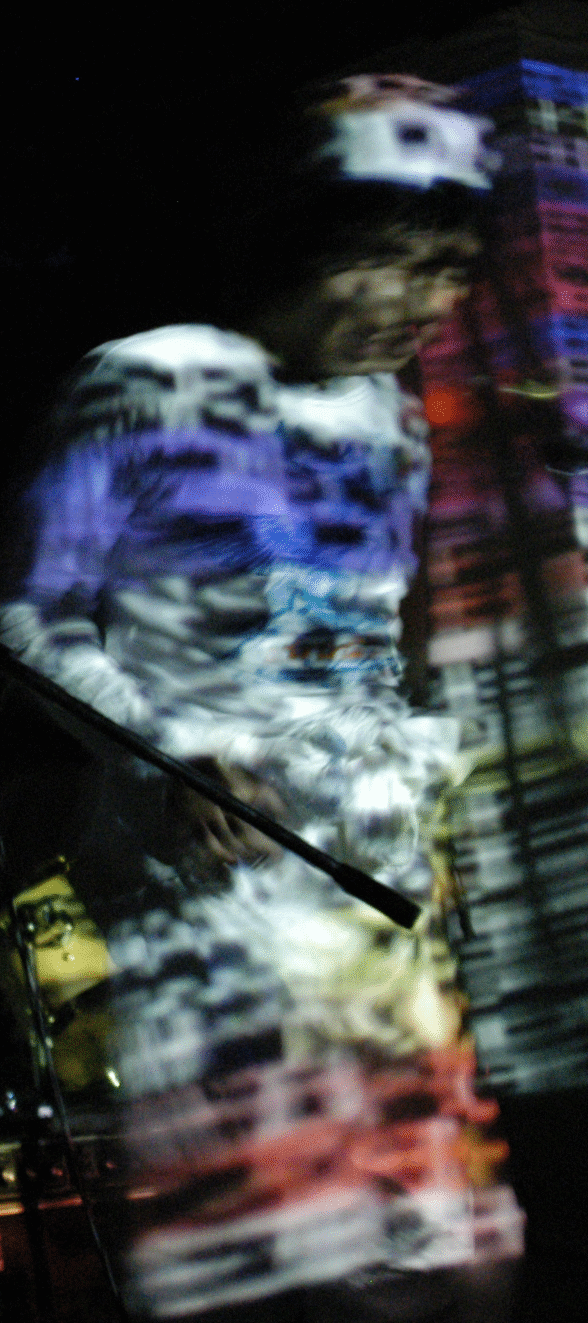NOVEL FUN TO LOOK
読まなくても楽しい小説。
PICTURE BOOK FUN TO READ
読んでも楽しいビジュアルブック。
For Nobody みんなじゃない人のために。
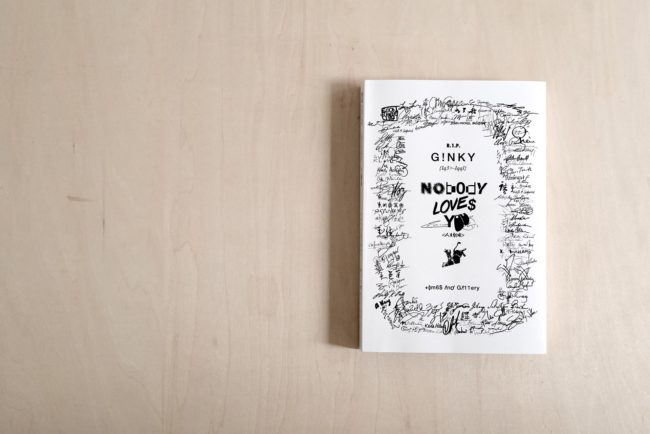
ABOUT and Author's words商品詳細 &著者のことば
"Nobody Loves You" 『ノーバディは君に首ったけ』
text/design: Masato Samata 文・デザイン:サマタマサト
- Age range対象年齢
- 3 - 120 years3-120才
- Book size判型
- A5 transformA5変形
- Coverカバー
- UV printing, black and whiteUV印刷、白黒
- Print length本文
- 300 all black and white pages白黒300ページ
- Thickness厚み
- 210mm (stand-alone)210mm
"At first, I was designing of 300-page paperback with only page numbers. When I completed it and showed the PDF to few people, everyone said - It would be nice, but it would be even better if there was a your text in white space!?" "最初はページノンブルだけの白紙で300頁のペーパーバックを考えていた。…完成して何人かに見せたら「悪くないけど、本文があったらモアベターなんじゃない!? 青春小説でも書いてみたら…」とススメられて…。"
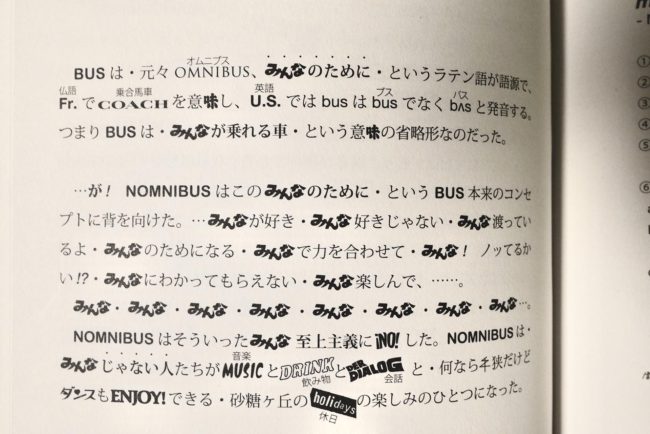
- Genreジャンル
- Marrontic Novel (Sports, Music, Art, People ....)マロンチック小説(Sポーツ、Mージック、Aート、Pープル…)
- Language言語
- Japanese日本語
- Publisher発行
- Kinkan Publishing; 1st edition (early summer. 2020)Kinkan Publishing; 初版(2020年初夏)
- Publication date発行日
- Early summer, 20202020年初夏
Writing is designing to me. Therefore I wrote this novel using Adobe Illustrator.
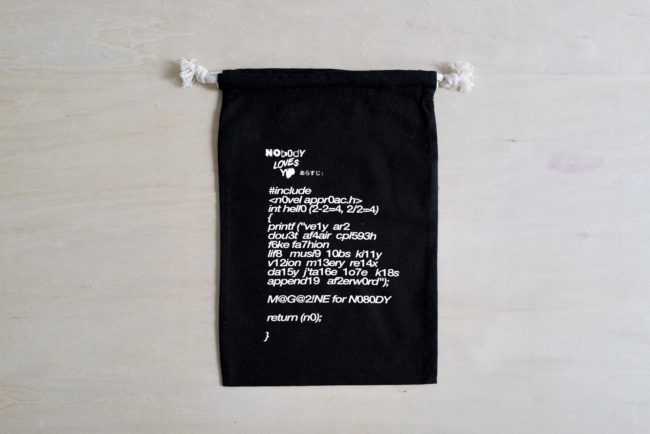
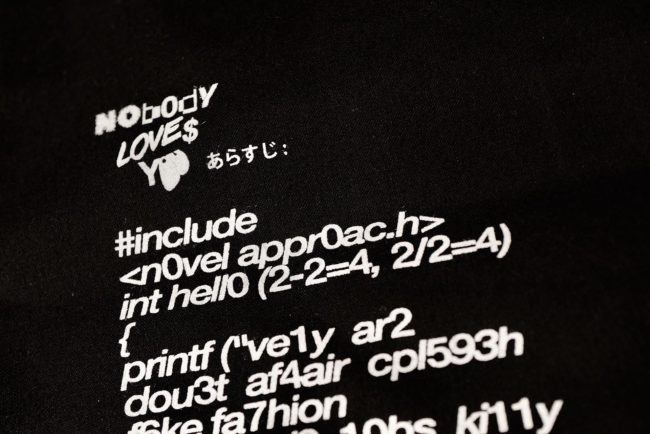
- Optionオプション
- Cotton drawstring bag as Book jacket巾着ブックカバー
- Shipping Weight重量(本体+巾着+梱包)
- 400g400g
"Stand-alone! Like a tomb, like a monolith, like a vending machine, like a flower.…厚みが210mmもあるのは、モノリスみたいに立たせたかったから。自立・独立・孤立…、異議申し立てや倒立なんかのシンボルにしたかった…。"
REVIEWレビュー
Nobody Loves You 解説
長谷川踏太 (クリエイティブ・ディレクター)
Tota Hasegawa (Creative Director)
僕と本作の筆者・サマタマサト氏(以下サマタさん)が初めて出会ったのは、原宿のどこかで行われた、若いデザイン専門学生を前に大人のデザイナーが適当なことを喋るという、かなりインチキ臭いイベントの楽屋で、お互い出演者としてそこにいるものの、なんだかバツが悪い感じでいたら、同じくバツ悪そうにしていたサマタさんの方から話しかけてくれたのがきっかけでした。
サマタさんは僕より一回り上なのですが、世間に対して感じる居心地の悪さみたいなのがとても似ていて(=みんなじゃない人同士)意気投合し、それ以降よくロンドン⇆東京の長スカイプなどしてお互いの好きなもの(主にデュシャンやサッカーの話題)や、嫌いなものの話をたくさんしました。
かれこれ20年くらいのお付き合いをさせてもらった人間として言える、サマタさんの傾向は、「今、XXXやってるんだよね~」という時は、普通のXXXではない、という事。
「今、田舎暮らし、してるんだよね~」と言うので、自然の多い環境で花を愛でたりしているのかなと思いきや、ラモーンズのレコードジャケットを庭に飾ったり、古いMacintoshを苔の上に陳列した写真を見せてくれたりして、挙げ句の果てに言った言葉が、「今、自然と戦ってるんだよね~。長谷川くん、自然は手強いよ~」
その次に思い出すのは、「今、映画監督やってるんだよね~」。映像作品を作っているのかと思ったら、出来上がったのは、動くテキストとスライドショーと音楽がレイヤー状に合わさった不思議なもの。でもちゃんと感動できる。(これは本作に出てくる、ギンキーが作ったとされる映画『呼吸、ときどきアート』の事。)
そして、「今、小説書いてるんだよね~」と最近言われて、流石に普通の小説は想像していなかったのだけど、まさかこういうことになってるとは思いませんでした。
本作では、所々言葉がグラフィックロゴに変換されていて、しかも言葉がダジャレになっている上に、グラフィック的なダジャレにもなっていたりして、最初は普通の文章を読む時の3倍くらいの脳のエネルギーを必要とします。読むのか眺めるのかどうして良いかわからない状態でスタートし、10ページくらい読み進めていくと、脳が慣れてきて、ロゴが気にならなくなってスラスラ読めるようになってきます。しかしストーリーに入り込んで、ロゴを意識しないでスラスラ読んでいると、急に気になるロゴが出てきて、読んでいると思ったら、観ている状態になってしまい、まったく油断なりません。
この小説?のシステム、"注釈の方が本篇よりも多い"でお馴染み、田中康夫氏の名著『なんとなく、クリスタル』が登場した時に匹敵する小説界の事件ではないでしょうか?
そして、こういう変(meaning good! - 
この物語で、ギンキー/サマタさんが一貫して示し続けている態度は、「やるときは、やる。」ではなく、「やるときは、あたりまえにやらない。」でも「ときどき、あたりまえにやる。」です。
だから、ギンキーのことを書くのに、あたりまえの小説の方法で書くのは本人に失礼ということで、こういう形式になったんだろうと自然と想像できますし、この物語の中の世界に出てきそうなこの本が、物質として現実の世界にいる僕の手にあるというのが、なんとも不思議な感じで…… と、ここまでこの『Nobody Loves You』の解説を書いてきて、ふと、この「解説」は、こんなに「解説」風でギンキーに許してもらえるのかと不安になってきました。「あたりまえにやらない」の精神に則り、もっと「解説」らしくない「解説」を書いた方が良いのでは、と一寸思ったのですが、ここは「ときどき、あたりまえにやる」の方でいいのではという判断に至り、このままで行かさせていただくことにします。
「やるときは、あたりまえにやらない。」でも「ときどき、あたりまえにやる。」本作を読んだおかげで、「ときどき、」の塩梅も少しわかってきたみたいです。
2020年3月16日
Deconstructing Delaware
Experimental Jetset (グラフィック・デザイナー)
Experimental Jetset (Graphic Designer)
"Das Sein ist, aber das Nichts nichtet" ("The thing is, but the nothing nothings") – quoting Martin Heidegger
"You've got to accentuate the negative Eliminate the positive
Get rid of the affirmative
Don't mess with Mister In-Between..." – misquoting Bing Crosby
I.
When looking at the influences and inspirations of Masato Samata (Delaware), it's hard not to notice the prevalence of nothing – or more precisely, the pop- cultural notion of nothingness, of negation, of negativity. The practice of Delaware seems to refer to all kinds of nothingness:fromNoWave('NoNewYork')toJohn Cage (4 ́33 ̋ ), from the Beatles' White Album to PiL's 'Album', from 'Blank Generation' to 'Pretty Vacant' –
in short, from the Zen-like emptiness of Fluxus to the transgressive nihilism of punk.
In fact, 'Nobody Loves You', the title of the book that you are holding in your hands right now, seems to echo PiL's 'This is Not a Love Song' – a true anthem of negativity. And even the name 'Delaware' brings to mind a certain sense of nothingness – after all, the American city of Delaware seems to be situated right in the proverbial 'middle of nowhere'.
2.
Deconstructing Delaware.
Contemplating the relationship between Delaware and this notion of nothingness, we immediately had to think about the word 'design'.
Obviously, the word 'design' has a very positivist, constructivist ring to it. After all, to design is to create,
to build – to make something out of nothing. However, when looking a bit longer at the verb 'to design', one can also read its opposite meaning: 'to de-sign'.
What's indeed interesting about the word 'design' (and thus the word 'de-sign') is that it contains the prefix 'de-'. And as we all know, the prefix 'de-' is mostly used to indicate processes of negation (e.g., 'deconstruction'), separation (e.g., 'dehumidification'), descent (e.g., 'degradation'), and reversal (e.g., 'detraction'). In that sense, the prefix 'de-' is comparable to prepositions like 'dis-', 'un-', 'a-', 'anti-', 'counter-', 'contra-', and 'non-'.
This alternative way of reading the word 'design' (as 'de-sign') radically changes its meaning. While the verb 'to design' refers to the act of constructing signs, the verb 'to de-sign' refers to the notion of deconstructing signs – the act of erasing signs, of destroying them.
Maybe this notion of 'de-sign' is a good way to describe the practice of Delaware – stripping away the spectacle, questioning the world of signs and symbols that surround us.
In fact, this might also be a good moment to look at the two letters 'De' in 'Delaware'. Perhaps Delaware already contains, within its own name, this element of negation, of reversal, of contradiction. Maybe the correct way to read Delaware is indeed 'De-laware'.
3.
Nobody Loves You II.
DESIGN
DEACTIVATE DEATOMIZE DEBASE DEBRIEF DEBUNK DECAF DECAMP DECAPITATE DECAY DECEIVE DECODE DECOLLAGE DECOLONIZE DECOMPOSE DECOMPRESS DECONSTRUCT DECREASE DEDUCT DEFACE DEFAULT DEFECT
DEFER
DEFILE DEFLATE DEFLECT DEFLECT DEFOCUS DEFORM DEFORMAT DEFORMALIZE DEFRAUD DEFROST DEGRADE DEHUMANIZE
4.
Deconstructing Delaware.
DEHYDRATE DEIFY DELEGALIZE DELETE DEMATERIALIZE DEMODE DEMODERNIZE DEMEMORIZE DEMILITARIZE DEMIRRORIZE DEMOBILIZE DEMOTIVATE DEMULTIPLY DENATURALIZE DENOUNCE DENY DEPARALYZE DEPLOY DEPRESS DEPRIVE DERADICALIZE DERIDE
DERIVE DESTABILIZE DESTERILIZE DESTRUCT DETACH DETERMINATE DETONATE DETOUR DETOX DETRACT DEWEAPONIZE DEVALUE DEVIDE
DEVO DEVOLVE
DELAWARE
5.
Nobody Loves You III.
Browsing through 'Nobody Loves You', another thing that immediately comes to mind is Lettrism (the French avant-garde movement, founded in the mid-'40s by Isidore Isou).
'Nobody Loves You' contains, within its pages, a barrage of logos and marks, pixelated hieroglyphs, modernist ciphers, structuralist ideograms, disembodied symbols, deconstructed signs. A typology (and topology) of graphic subversion.
These collage-like pages resemble the work of Lettrist artists such as Maurice Lemaître (especially his experiments in Hypergraphics and Metagraphics), and Gabriel Pomerand (we're specifically thinking of his novel 'Saint Ghetto des Prêts', from1950).
In other words – we see 'Nobody Loves You' foremost as a contemporary manifestation of Lettrism, following in the footsteps of the great Lettrist artists and poets. It is a work that isolates signs, restructures them, and fires them back into the chest of the spectacle.
In that sense, it is interesting to note that the original Lettrist International later transformed into the Situationist International – a movement that found its ultimate expression in the manifesto 'The Society of the Spectacle',writtenin1967byGuyDebord.
In his iconic tract, Debord sketches a society that is alienated (from itself) through the use of images, of projections, of illusions, of spectacles, of representations – a society that can only be fixed through a radical restructuring of the visual landscape.
'Nobody Loves You' imagines such a restructuring – it offers an idiosyncratic psycho-geographic drift (dérive) through the ruins of our current graphic landscape.
6.
Deconstructing Delaware IV.
However – amidst all this talk about nothingness, negation and negativity, we shouldn't forget that the destruction of signs ultimately leads to the construction of objects. By puncturing through images, we are actually revealing the material world around us.
Think of Malevich's Black Square. At first sight, this seems to be a painting about nothing. By rejecting the idea of representation, Malevich seems to negate the image – a clear case of pictorial destruction.
However, one could argue that this gesture of destruction is actually an act of creation. By removing the image, Malevich literally reveals the painting itself
– the painting as an object. The canvas stops being a invisible, neutral device, and starts being a physical, tactile entity. By destroying the image, Malevich created an object.
The same can be said about Delaware. Take for example their 'Scrap' multiple (from 2014), which consisted of a melted12-inch record. One could describe this gesture as a simple act of nihilism – the destruction of vinyl, the removal of music.
However, by turning the disc into a molten object, the record suddenly becomes visible as an artefact, as
a true entity, as a sensuous sculpture. The disc is not an invisible, neutral device anymore – it is a tactile, touchable thing-in-itself.
It's the positive power of negative thinking. As Masato Samata once remarked: it's the power that turns a 'Nowhere Man' into a 'Now Here Man', and that turns 'NoOne'into'Number1'.
It's the power that suggests that the line 'Nothing's Gonna Change My World' could also refer to the world being changed by the notion of nothing.
7.
Nobody Loves You.
In that sense, the idea of nothingness is a positive entity, an agent of change, an enabler rather than a disabler. The nothing is a thing.
So let us celebrate the thingness of nothingness, and the nothingness of thingness.
Nobody Loves You? No, Body Loves You!
Experimental Jetset Amsterdam.
March 18, 2020.
本歌を取らなきゃ意味ないね、の流れる店内で。
佐々木暁 (デザイナー)
Akira Sasaki (Designer)
レトリスムとマクルーハンのあのもどかしいニアミスをぼくらはいつまで眺めていたんだろう。
ここへ来る途中、zenとcut upを経由した絵心経をキミは見たかい?
すなわち象形とロゴの同義性の証明だよ。
まもなくapple OSにも標準搭載となる、あれのこと。
ルビの逆引き。ルビが親字を選ぶという新機能のヒントにもなった、あの企業CIのエスペラント化だよ。
点字としての、手話としての、風景のOCR。
この本にはもう、その準備についてじゅうぶんすぎるくらい宣言されてるんだって。
(そうだね、似てるけど、ルー語とはちがうんだ)
そう「Try Some, Buy Some」といったら誰バージョンか、
そのチョイスで文法は変わるのさ。
同音異義語としての「文脈」は、キミがどう生きたかに懸かってるんだ。
ポップは、文体のことなのさ。
平安変体仮名はとっくにそれをやっていたというのにね。
それとタギングよりもずっとずっと早く、花押があった。
だけどぼくらは、そんなことさえすっかり忘れて過ごしていたなんて。
しかし「This is it」には困ったよね。
ワッツとマイケルのダブルミーニングがまだまだ浸透していないからね。
「意味変わっちゃう!」
だからラトーヤの「(Ain't Nobody Loves You) Like I Do」は「本歌取」とは云わせない。
注文のフローズン・ジャップ・ヨーグルト×2、
スージー・クリーム・チーズ・バーガー×2が、
次なる問い、それと「I Can Hear Music」は? を遮って運ばれてくる。
いつかイズーとルメートルの墓前に手向けるのなら、もちろんこの東京版にきまっている。
けれどCity Lights版はいったい誰なら満足の英訳を叶えてくれるのか、
ぼくにはいいプランがまだ浮かばないんだ。
そしてジョン・ジョルノの命があと1年あったら!と考えずにもいられない。
だってRevue OUとESPのダブルネームでヴァイナル(音声詩)化が間に合ったかもしれないのだから。
アイデアはいつもスマイルといっしょ、ゼロ円。
ぼくらの人生、やっぱりニアミスばかりだね。
出版に先んじてサイトにアップされたのはフォントだった。
(フロッピーからインストールさせる深追いは無用だけど、でもぼくらはFUSEの21を期待した)
ただしTrueTypeというチョイスが「文法」だと思うんだ。
どうかな。こんど訊いてみるといいよ、そのひとに。
「ははは、そうかも!」って言ってくれるはず。
未来はもう「ポップ」ではなく「クオリティ」になってしまったね。
Tronがオスカー作品賞に選ばれなかったあの日から、とっくに予見していたことさ。
だから、それ、むしろ好都合。
そのひとが云うには、シリアスになったらゲームオーバー、だって。
「わお、かっこいい!!」
そうさ、いちばんかっこいいのさ。
だって、クオリティの俎上になんか居ないんだもの!
(続いてテーブルに乗せられたラム!に「注文しすぎたね」と顔を見合わせたけど、
ラッキー、「おみやげ」にちょうどいい巾着がある、って寸法)
さあさあ今夜は外食解禁、さっそく乾杯といこうよ。
なんといってもFun Houseがリリース50年を迎える日なんだからさ。
ということはPhilosophy of the Worldから50+1年。
クオリティ、いらないよね。の証明!
まったく同意(do it!)
高いけどなにやら珍しいし、コレクション感覚で一応買っておくか……
古川耕 (ライター/放送作家)
Kou Furukawa (Writer/Radio writer)
……とナメた態度で買った自分の後頭部を引っぱたいてやりたい。それぐらい素晴らしい本だった。「NObody LOVES YOU ノーバディは君に首ったけ」
ぱっと開いたときの異様さに衝撃を受けたのは事実。文章の中に登場する商品名や地名、建物名、アーティスト名やレーベル名などの固有名詞は、すべて本物のロゴやサインがサンプリングされて文字に代用されている。さらにそれがダジャレ的にも応用されて(例えば文中で「〜した」と書かれる時は『とんねるずのみなさんのおかげでした』の「した」のロゴがサンプリングされている。あと「味」という漢字はおそらくこれ、「味ごのみ」のロゴからとられている)、とにかく見た目が賑やか過ぎる。ある人は『サザエさんうちあけ話みたいだ』と言っていた。この執拗さに気圧されて、たぶん読めないかもと思いつつも買ってみたのだが、いざ読み始めたら「普通に」面白くて一気に読み終えてしまった。
物語はぼくとガールのメンターである御隠居ことギンキー(本名は不在(いない))の葬式(SUPER ending Party!)から始まる。砂糖ヶ丘・餡子が浜湾のgolf Park旧9番ホールのグリーン脇バンカーに集まったギンキーの昔の仲間たち。そこからぼくはギンキーの半生と砂糖ヶ丘で起こった様々な騒動や人々との出会いを回想していく。真の意味でアートを嗜むギンキーの人生には、ポップアート、デュシャン、ビートルズ、オールドスクール・ヒップホップ、ダブ、茶道、トータル・フットボール、タイプライター、レコード屋経営、サッポロ一番塩ラーメン、Macintosh、猫、ミルクボーイの漫才などが次々絡んでくる。見開きからは膨大なポップアイコンが溢れんばかりで、さらには「普通の」地の文章も、「ドミニカコスタリカ(ルビ:どうにかこうにか)」「てんやわんや(ルビ:Hip Hop)」「いい+−(ルビ:加減)」など、虚を突かれて思わず笑ってしまう遊びが次々と。それでいて感動したのは、ぼくとガールの成長物語として、愛すべきギンキーの一代記として、そしてアートとはなにか?を問いかける真っ当でパワフルなメッセージとして、「普通に」心揺さぶられてしまうのだ。
と、ここまで「普通」を強調するのは、つまりスタイル(文体!?)があまりに「普通じゃない」からだが、かと言ってこの相反するベクトルを切り分けても意味が無い。この内容を語るうえでこのスタイルが必要なのであり、このスタイルで語るからこそこの物語が導き出されたのだろう。途轍もない強度の一冊。今年ベストだと思う。
巾着の文字、何かのコードかと思いきや、あらすじ…!
青井典子 (グラフィック・デザイナー)
Noriko Aoi (Graphic Designer)
本文、幅も高さも様々なロゴ・サインを読みやすくされていて、とにかく素晴らしいです! (「した」のジャンプ率と位置が本文として絶妙ですごいです)
デュシャンもお茶も音楽のお話もすごく面白くて、かと思えば知っているロゴに翻弄される
解説の長谷川さまの書かれている通りの読み方になっておりました。
自由なルビとノンブルが楽しく、一読後ノンブルだけ眺めたりして楽しんでおります。
(1桁台のカオスもさることながら、ボウイがわんさかの39pや、レシートを使ったページが好きです)
(BADのルビも一体何種類あるのでしょう笑!)
また、これだけのロゴ・サインの許可は大変だったに違いない…と思ったところのミルクボーイ風FAQでの種明かし…引用と複製のポップアート、デュシャンについて書かれていることを思い起こし、ニヤリとさせられました。
これは 2020年代の本だ
近藤映斗 (書店Eureka 店主)
Eito Kondo (Eureka book store)
グーテンベルク以来
この世に現在のカタチの
本が出来てから
時代時代に、
こんな本今までなかった
という本が歴史に刻まれてきた
少なくともこの本は
前列がなく間違いなく
歴史に刻まれることだろう。
空前絶後ではなく
おそらく後に、この本に
インスパイアされた
本が産み出されることは
有るだろうが。
この狂気の
タイポグラフィを
サマタマサト氏は
あくまでポップカルチャー
として仕上げている
恐るべきことに
これはれっきとした
青春小説なのだ
これを
どう受け止めるかは
読者の手腕にかかっているが
何れにしろ
この本は誰にも真似出来ない
これは
2020年代の本だ
今を感じとれ
TRIAL試し読み
AUTHOR著者
BUY購入
Mail Order通販
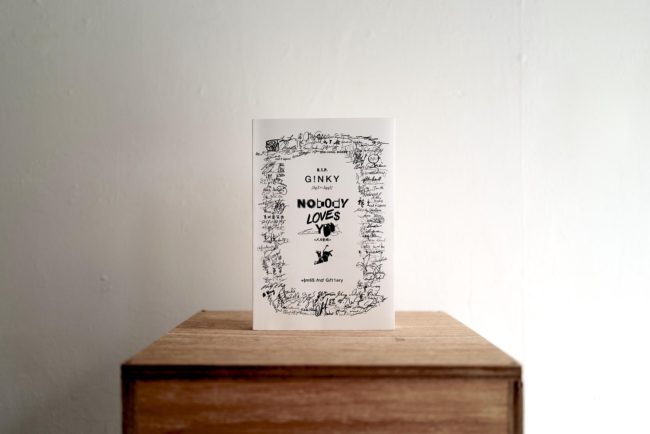
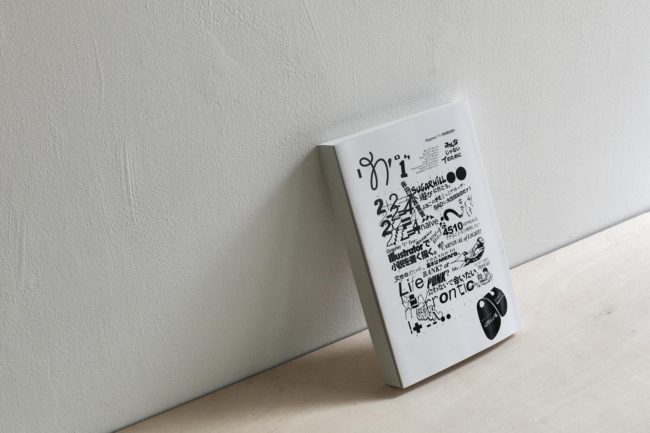
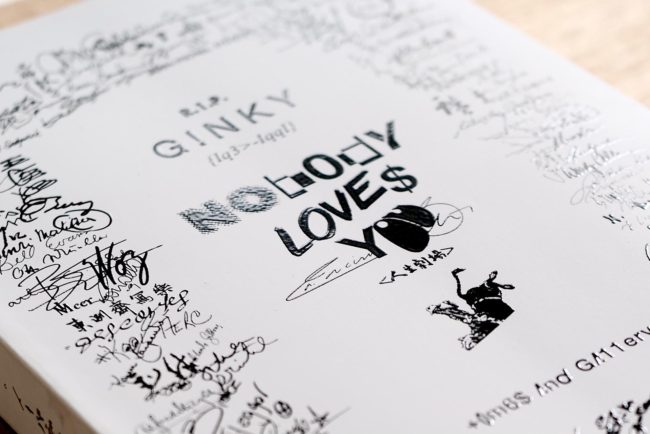
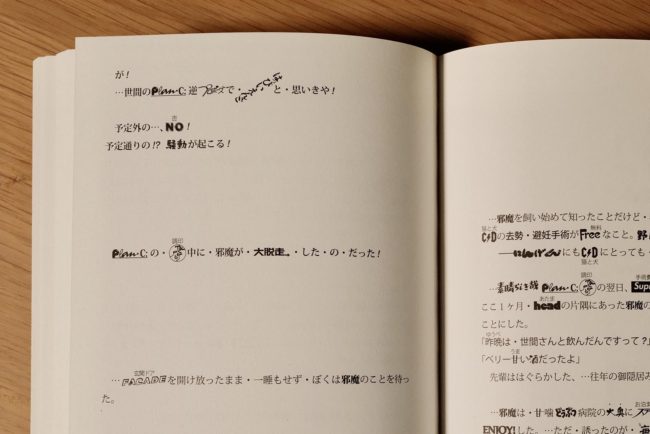
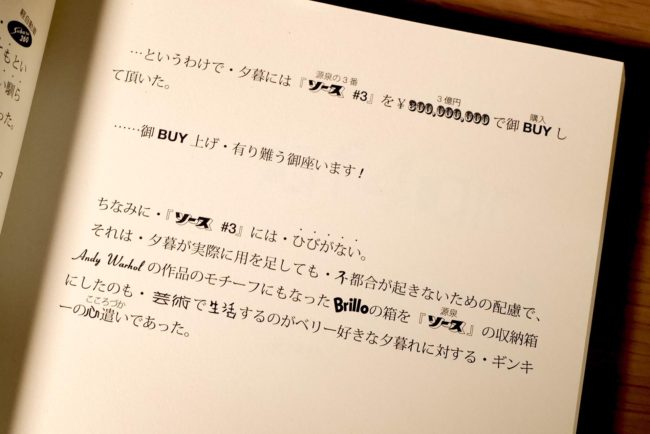
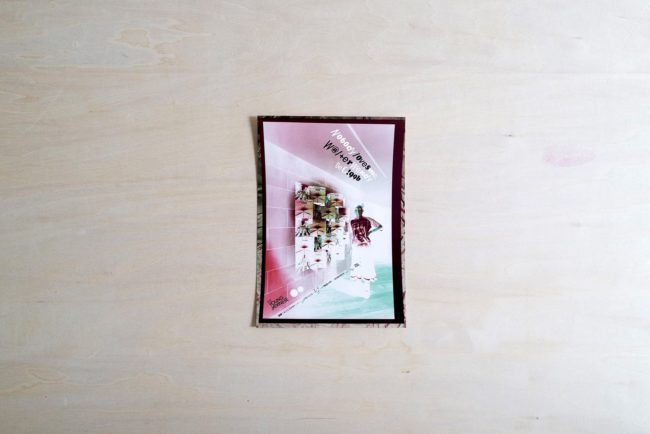
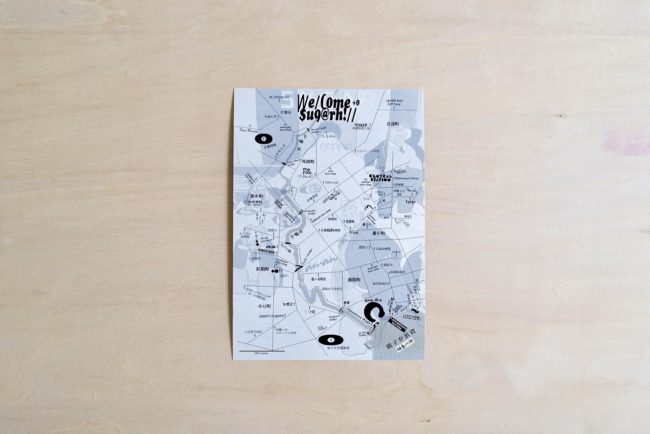
Product A商品 A
book "Nobody Loves You" 書籍『ノーバディは君に首ったけ』
text/design: Masato Samata 文・デザイン:サマタマサト
Price: 5,000yen (5,500yen including tax) 価格:5,000円(税込5,500円)

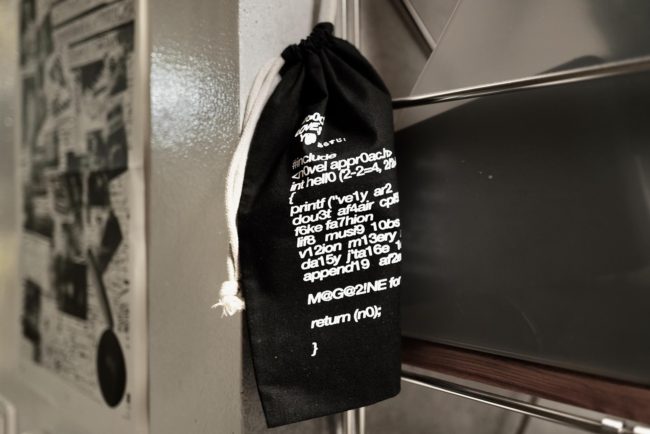

Product B商品 B
"This is a convenient item for outdoor, such as going out to the town and playing in the mountains." A5判/300頁の本がすっぽりジャストサイズの巾着仕様。街へお出かけ、山遊びなどリゾートのお供にも便利な一品。
Cotton drawstring bag 特製巾着
design: Masato Samata
Cotton/W175mm x H260mm/Black
デザイン:サマタマサト
コットン/W175mm x H260mm/黒
Price: 1,000yen (1,100yen including tax) 価格:1,000円(税込1,100円)
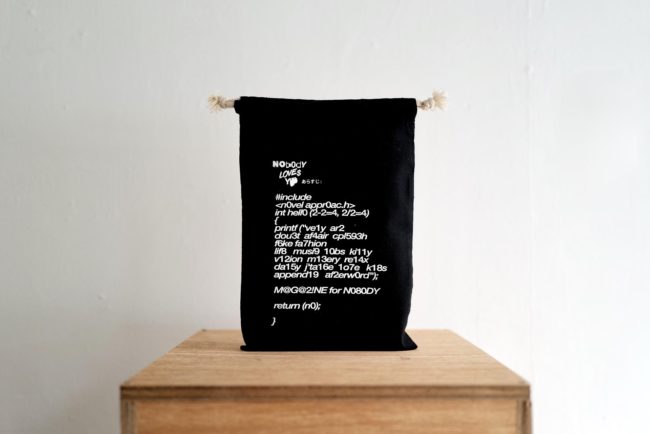
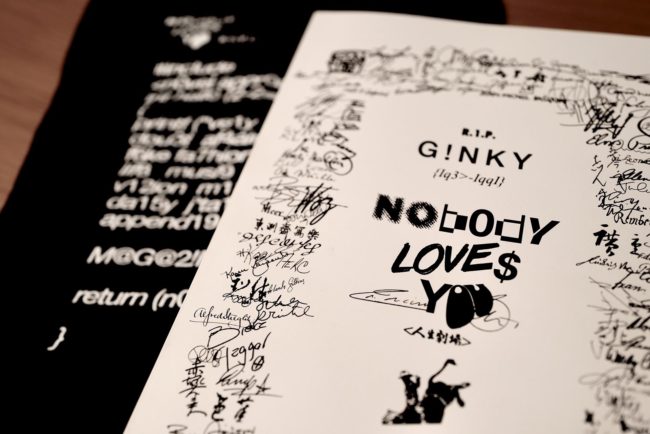
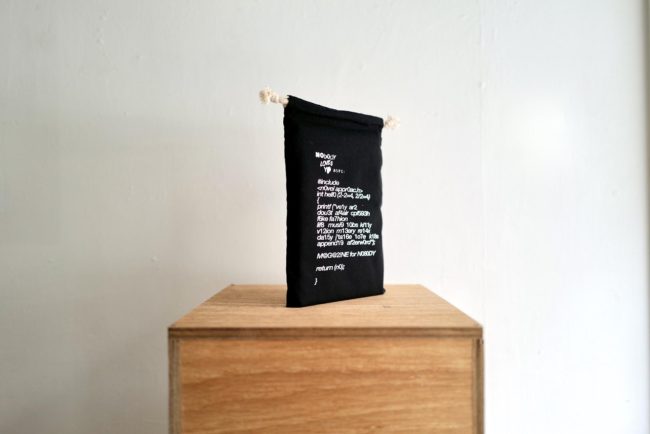
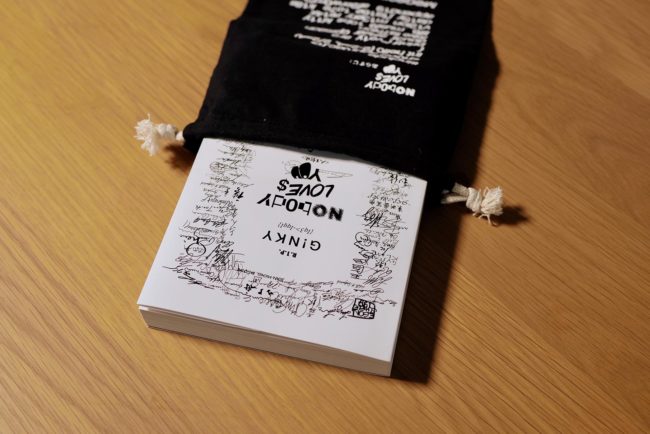
Product A+B商品 A+B
book "Nobody Loves You"
with Cotton drawstring bag
書籍『ノーバディは君に首ったけ』
with 特製巾着ブックカバー
Price: 5,500yen (6,050yen including tax) 価格:5,500円(税込6,050円)
